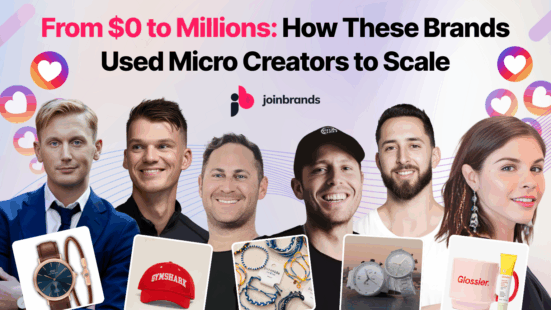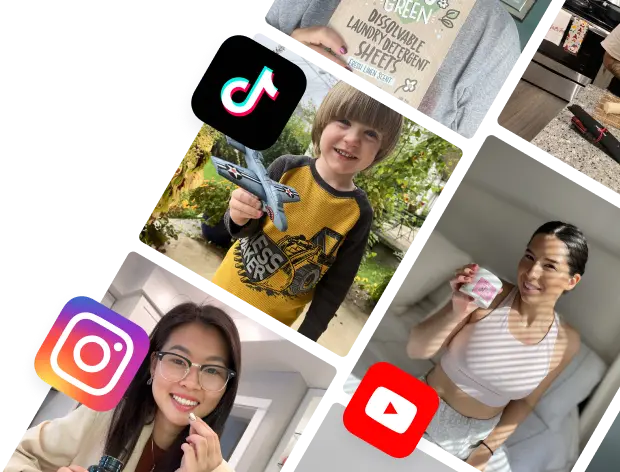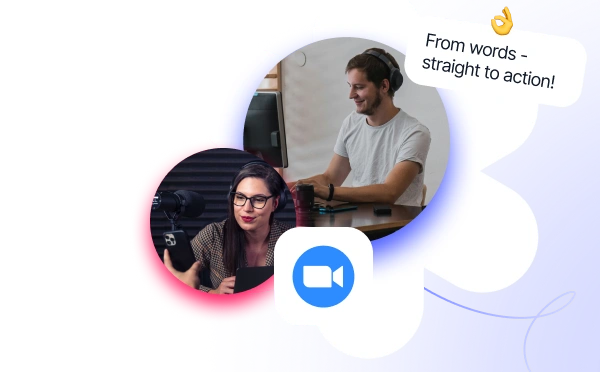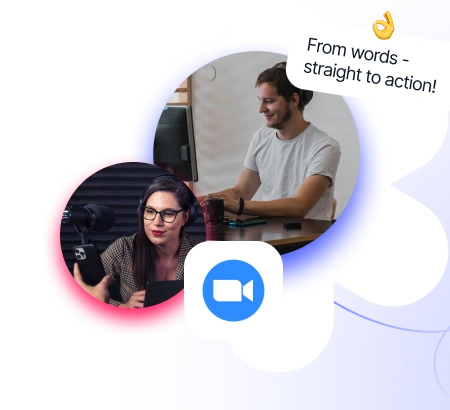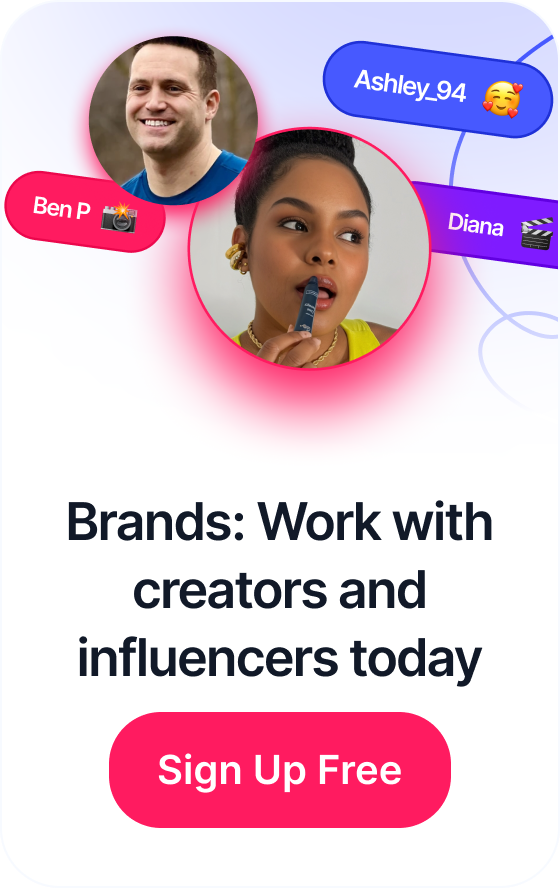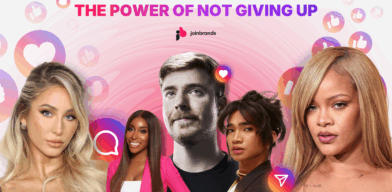 The Power of Not Giving Up: How Brands and Creators Turned Rejection into Success
The Power of Not Giving Up: How Brands and Creators Turned Rejection into Success
What if I told you some of the biggest brand growth stories in the last decade didn’t start with seven-figure budgets, Super Bowl ads, or celebrity endorsements… but with college students, scrappy DTC founders, and customers who just really liked a pink tube of lip gloss?
This isn’t just motivational fluff. It’s proven. Today, we’re breaking down three brands that used tiny creator budgets to generate massive reach, outsized engagement, and meaningful sales. And also a plug-and-play budget you can steal, and an exact micro-creator playbook to run in 30 days.
If they can do it, so can you.
Table of Contents
TL;DR
Micro & nano creators + product seeding + repurposing = outsized reach. Brands that focused on volume, authenticity, and simple incentives scaled followers, sales, and brand love without blowing their ad budgets.
Pura Vida Bracelets – The $0-to-Millions Ambassador Army
When Pura Vida started in 2010, it was just two guys selling handmade bracelets from Costa Rica with no real marketing budget.
Instead of trying to buy billboard ads or chase celebrity endorsements, they tapped into the most underutilized growth engine of all: college kids with Instagram accounts.
They built an ambassador program where thousands of college students, micro influencers, and everyday fans got free bracelets and referral links. No super huge influencer deals. No overproduced photoshoots. Just product seeding, authentic photos, and peer-to-peer recommendations.
Why it worked:
- Relatability > Reach. When you see your friend’s roommate posting a bracelet, it feels more trustworthy than Kim Kardashian holding one.
- Network effects. Instead of one influencer hitting 1M followers once, 10,000 small creators hit their 500–5k audiences every single day.
- Built-in loyalty. Ambassadors weren’t just posting, they felt like part of a movement. When you wear the bracelet, you signal belonging.
Results:
- Pura Vida scaled into a $100M+ brand, with ambassador/referral programs accounting for ~12% of sales.
- The brand is now synonymous with boho, beachy lifestyle jewelry, an a symbol of friendship but it didn’t start that way. It started with $0 marketing spend and a bunch of college kids posting selfies.
Takeaway for brands: You don’t need an influencer with millions of followers. You need 200 – 500 small creators who genuinely like your product, will wear it, and will post about it. That’s how you create cultural saturation without cultural capital.
MVMT Watches – The Bootstrapped Brand That Hacked Instagram
MVMT (pronounced “movement”) launched in 2013 as a scrappy DTC watch company with a Kickstarter campaign and a few thousand bucks. They couldn’t compete with Rolex or Tag Heuer, but they could compete on something else: Instagram
Instead of expensive studio shoots, MVMT sent watches to micro influencers, 30k, 50k, 100k followers, who were willing to create content for product or small fees. The key was consistency. MVMT flooded their socials with influencer content, making the brand look bigger than it was.
But here’s the genius part: they didn’t stop at organic posts. They collected rights to this content and ran it as ads.
Suddenly, a $200 watch brand had thousands of lifestyle photos and videos ready to plug into Facebook and Instagram ads, without hiring a creative agency or renting a studio.
Why it worked:
- UGC outperforms glossy ads. People scroll past commercials. They stop at real people showing off cool products.
- Volume = testing power. Instead of spending $50k on one polished campaign, MVMT tested hundreds of creator-made ads with $50 – $200 boosts until they found winners.
- Built the illusion of scale. Even in the early days, the sheer amount of content made MVMT look like a massive brand.
Results:
- MVMT became one of the fastest-growing DTC watch brands, hitting $70M+ in revenue before being acquired by Movado in 2018.
- Their entire growth engine was fueled by influencer/UGC content + paid amplification.
Takeaway for brands: Don’t think of creators as a one-off campaign expense. Think of them as your creative department. Every UGC clip is a potential ad. And every ad is a potential sales driver.
Glossier – Turning Fans Into Creators
Before Glossier became a $1B beauty brand, it was a blog called Into The Gloss. Founder Emily Weiss understood something most marketers still ignore: your best marketers are your customers.
Instead of blowing money on traditional ads, Glossier focused on building community. They invited everyday fans and micro influencers to share their routines, post about products, and join the conversation. In many cases, Glossier didn’t even have to pay them. Customers wanted to post because it gave them social currency, being seen as a “Glossier girl” was aspirational in itself.
Why it worked:
- Community-first. Customers didn’t just buy, they felt like insiders.
- Micro credibility. Seeing five friends recommend the same pink Balm Dotcom hits harder than one celebrity shoutout.
- UGC as strategy. Glossier reposted, celebrated, and amplified fan content, making customers feel valued and encouraging even more organic sharing.
Results:
- Glossier scaled into a billion-dollar valuation largely on the back of customer advocacy and micro-influencer buzz.
- At one point, ~70% of Glossier’s online sales came from peer-to-peer recommendations and word-of-mouth.
Takeaway for brands: You don’t always need to hire big influencers. Sometimes your best content comes from your existing customer base and micro creators with followers who trust them. Feature them, repost them, and give them reasons to share.
Gymshark – Movement, Challenges & Community First
Gymshark is a near-legend in DTC marketing, especially as a blueprint for how creator / user-generated content + community can build a global brand from tiny beginnings.
Early on, the founding team sent products to fitness creators and enthusiasts: people using weightlifting, gym-gear content, etc., many of whom had micro / moderate followings, not huge celebrities. They let those creators show off the gear in “real gym life” settings.
They ran branded challenges to spur UGC. One famous example: “66 Days | Change Your Life”, where users posted initial and follow-up images over 66 days to show progress, using the hashtag #gymshark66. It encouraged people to share vulnerability and transformation.
Gymshark put heavy emphasis on content repurposing: posts from UGC / micro-influencers fed into Gymshark’s social channels, and also into paid ads that deliberately looked less polished (real people, gym shots, behind-the-scenes).
Why it worked:
- Authenticity & relatability. Gymshark’s audience sees people who look like them, struggling, improving, training. That builds trust.
- Network effect & consistency. Thousands of small contributions over time build massive content volume and continuous reach.
- Two-way loyalty. Gymshark doesn’t treat creators/influencers like contractors; many become “Gymshark Athletes” or ambassadors, more long-term, more invested.
Results:
- Hashtag campaigns like #gymshark66 got 45.5 million views on hashtag (just one campaign), with millions of engagements (likes, comments).
- TikTok + Instagram followings climbed into multi-millions. For instance, on TikTok they have over 4.2 million followers & 65.7 million likes and an enormous amount of UGC via #gymshark tagging.
- Their growth valuation: Gymshark was valued at ~$1.3B in 2020; this wasn’t just through raising capital. Their social and creator engine played a big role.
Daniel Wellington – Max Reach via Micros
Daniel Wellington (DW) is another great example: they scaled globally not by celebrity overload, but by using product seeding and micro / nano influencers early on, plus discount codes and user photos.
From very early, DW worked with micro / nano influencers and even people with small audiences, often sending free watches in exchange for posts. They didn’t wait till they had big budgets.
They made heavy use of hashtag campaigns and encouraged customer photos wearing the watch, using tags like #danielwellington, making UGC a feed into their social proof.
DW used influencer discount codes / affiliate codes to measure performance and provide incentive, driving both awareness and conversion.
Why it worked:
- Low barrier & wide reach. Small influencers are cheaper or free (product-for-post), which means you can send out many more units and collect many more posts.
- Organic visuals in everyday life. Watches show up in travel, meals, work setups. These settings look real and aspirational without being flashy.
- Authentic vibe. Because posts come from many different people in many different contexts, the brand feels widespread, not curated or edited.
Results:
- Their micro/nano influencer strategy delivered significantly lower customer acquisition costs early on; higher return on ad spend vs expensive macro-campaigns.
- They grew a huge presence on Instagram and other social platforms globally, becoming almost synonymous with “minimalist stylish watches you see everywhere.”
The Playbook – exactly what to do (30-day sprint)
Use this as copy-and-paste instructions for a low-budget creator campaign.
Week 0 – Setup (planning, tracking, briefs)
- Budget: $3k–$6k total (realistic small spend model below).
- Measure: pick 2 KPIs – direct conversions from referral code & engagement lift on owned channels.
- Tracking: unique referral codes, UTM links, and a simple spreadsheet for creative performance.
Week 1 – Recruit & seed
- Find 50–150 micro & nano creators (1k–100k followers) with high engagement and contextual fit. Prioritize topical alignment over follower count.
- Offer product + a choice of incentives: small flat fee ($50–$300 based on size), 10–20% affiliate, or store credit. Ask for 1 vertical video + 1 still. (Pura Vida and Glossier used this model.)
Week 2 – Publish & collect
- Have creators post organically (staggered schedule). Collect assets and secure rights to repurpose the best clips across ads and owned channels (landing pages, email). (MVMT’s growth used creator content for paid creative.)
Week 3 – Boost & test
- Boost the top 5 performing posts with $50–$500 each to cold audiences. Use A/B tests: Creator A vs Creator B creative, landing page variant, and CTA wording.
- Track CPA, ROAS (if running direct-response lifts), and follower growth.
Week 4 – Scale the winners
- Double down on top performers: more sponsor posts, more ad spend on those creatives, and recruit similar creators. Build an ambassador roster for ongoing low-cost content. Repeat monthly.
Quick creative rules (so your small spend actually works)
- Brief ruthlessly: ask for 15–30s verticals, 3 hooks, and 1 product close. Keep it creative but simple.
- Repurpose everything: ads, emails, product pages – don’t let a single piece of content die on a profile.
- Favor specificity over fame: a targeted micro creator who truly uses your product outperforms a random macro celebrity.
- Test fast, cut faster: boost winners for 48–72 hours. Kill the rest.
But Here’s the Catch…
All of this is powerful, but it’s also a ton of work.
- Recruiting creators takes hours.
- Chasing contracts and usage rights is messy.
- Budget clarity gets fuzzy when you’re tracking in spreadsheets.
- Repurposing at scale is chaotic without structure.
With JoinBrands, you don’t have to do this alone.
Our platform handles:
- Creator discovery + matching
- Contracts + payments
- Content rights management
- Budget clarity + campaign tracking
All in one place. Faster, cleaner, and way less stressful.
If these brands could pull it off manually, imagine what you could do with JoinBrands. Sign up today for free!
